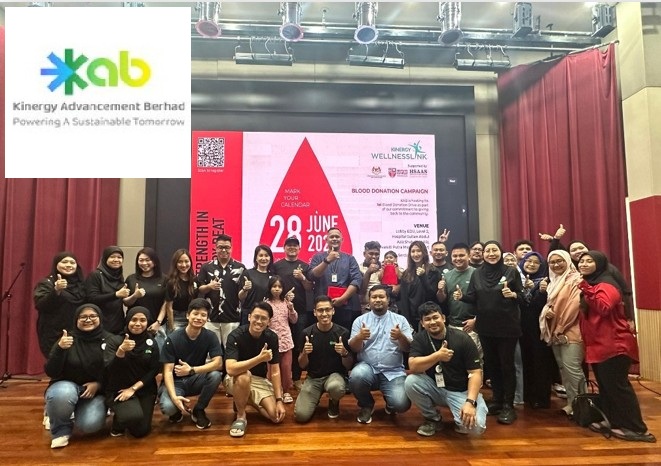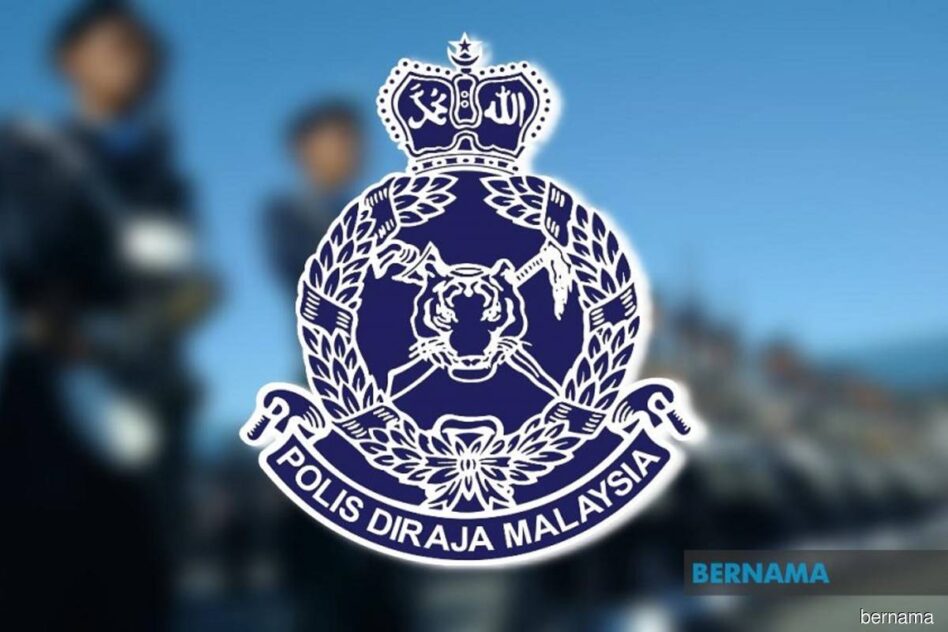By Ranjit Singh
The worsening trade talks between China and the US are expected to result in a pullback in global trade. This is where shipping companies and port operators are the first few players to suffer.
However, it appears that Westports Holdings Bhd is on the right track with a commendable 11.9% increase in net profit to RM159.24 mil for the third quarter ended Sept 30, 2019 (3Q19), against a RM142.32 mil net profit in 3Q18 due to a double-digit growth in container volume and the implementation of a container tariff hike that took effect in March 2019. The group’s revenue for the quarter also grew 10.3% to RM460.43 mil from RM417.55 mil in the same quarter last year.
The company derives its income from providing container handling services, conventional cargo services and a wide range of other port services.
In the nine months just ended (9M19), Westports’ net profit climbed 20% to RM465.46 mil from RM387.93 mil in the previous corresponding period, while revenue expanded 11.1% to RM1.33 bil from RM1.2 bil previously.
It handled 8.04 million twenty-foot equivalent units (TEUs) of containers during the period, an increase of 16% from a year ago, contributed by transshipment containers which rose to 5.39 million TEUs, while gateway volume expanded to 2.65 million TEUs.
Transshipment is the shipment of goods or containers to an intermediate destination, then to another destination, while gateway means handling the import and export of the container business.
For vessels calls in 2019, Westports says it has accommodated a greater proportion of ultra large container vessel at its berths, especially its newer wharves, as the liner industry deploys bigger container vessels.
“We expect volume growth to be in the region of 13% to 15% for 2019 and 3% to 8% for 2020,” the group adds. Utilisation of the port during 9M19 was at 76%.
Growth in volume ‘robust’
The volume mix between transshipment and gateway was 67:33 for 9M19. According to Maybank Investment Bank, the growth in volume for the company was “robust”, driven by transshipment volume which increased 17% yoy.
This was mainly due to the Ocean Alliance moving four of its services from PSA Singapore to Westports in April 2019. Ocean Alliance is a major alliance of international shippers including CMA CGM SA, China COSCO Shipping Corp Ltd, Orient Overseas Container Line Ltd and Evergreen Line. Currently, around 50% of Westports’ business is derived from this alliance.

The research firm adds that local volume also increased due to faster exports from the weak ringgit and the relocation of paper mills from China to Port Klang. During that period, local volume grew 6% yoy.
However, UOB Kay Hian believes that the yield hike impact during the period was muted. It says stripping out container costs, Westports’ net container yield was unchanged at RM209 per box from the previous period. It says the management had alluded that besides the lower mix of high yielding gateway at 33%, the flattish net yield was due to fewer value-add services.
Previously, it said there was very high demand for storage and reefer container movements but this has moderated in 2019. Reefer containers are big fridges used to transport temperature-controlled cargoes such as fruits, meat, fish, seafood, vegetables, dairy and non-food products such as flowers and pharmaceuticals. UOB Kay Hian says the moderation was due to seasonality and customer efficiency, adding that demand may recover if volumes continue to grow.
However, analysts are not ready to call a buy on the counter just yet despite the much improved numbers.
Based on a Bloomberg poll, there are seven “buys”, nine “holds” and one “sell” recommendations. The only “sell” recommendation was by TA Securities. Its analyst Steven Tan tells FocusM that he had factored in the souring US-China trade talks which would translate in a pullback in global trade.
“Normally, if there is a slowdown in global trade, shipping companies would suffer first, followed by port operators,” he says.
Tan’s target price for the company is RM3.87. Westports’ shares closed at RM4.24 on Nov 25. The analysts’ consensus price for the company is RM4.43.
TA Securities says the 3Q19 results in terms of trade lanes witnessed slower intra-Asia and Asia-Europe volume growth at 15% and 32% respectively, compared to 24% and 47% in 2Q19. Intra-Asia volume continued to dominate with 63% share of Westports’ total throughput in 3Q19, followed by Asia-Europe’s 17%. Meanwhile, Asia-America growth contracted for three consecutive quarters by 27% in 3Q19.

Westports 2 to require RM10 bil capex
The global outlook does not appear to be turning positive any time in the near term. However, this does not deter Westports from embarking on its ambitious growth drive. Its planned development dubbed Westports 2 will require a capital expenditure (capex) of around RM10 bil, which is earmarked for between 2020 and 2040.
However, critics are questioning whether businesses will go to Westports if it has a bigger capacity especially in light of the slowing global trade. Westports group managing director Datuk Ruben Emir Gnanalingam believes the company will be able to attract more businesses with larger capacity.
“We need to build capacity and the business will come in. Look at Singapore – its Tuas project will increase its capacity to 65 million TEUs when the project is completed (in 2040). We would have a capacity of 35 million TEUs by then,” Ruben tells FocusM in an interview.
The Tuas container terminal, when fully developed in 2040, will make the island state the operator of the world’s largest container terminal located in a single location.
On Aug 25, 2017, Westports received an approval in-principle from the government to expand its container terminal facilities from Container Terminal 10 (CT10) to CT17.
According to Ruben, the company had acquired a 154.2ha leasehold plot under the sea in Pulau Indah from the Selangor State Development Corp for RM116.9 mil. It is looking to buy another piece of land to enable it to build new container terminals CT10 to CT17. However, the company will only purchase the second piece of land once the concession agreement with the government is finalised.
Ruben says the proposed expansion would further strengthen the company and Port Klang’s role as the pre-eminent port for the nation’s gateway trade and also reinforcing the terminal as one of the main transshipment hubs in the Southeast Asia region for international container shipping alliances.
He adds that the company has completed technical studies and the environmental impact assessment as well as the layout for Westports 2.
Westports is one of the two ports in Port Klang, the other being Northport, which is controlled by tycoon Tan Sri Syed Mokhtar al-Bukhary.
UOB Kay Hian says the land reclamation for the first phase (CT10-CT13) of Westports 2 is likely to cost RM1 bil over two years, while each container terminal may cost around RM700 mil to RM800 mil. It adds that concession talks with the government could be finalised by 1Q20 to 2Q20.
In view of the large capex requirement for Westports 2, how will the company finance the development?
Ruben says the company is open for discussion with financiers on the issue.
“We may go for a mixture of debt and equity but would discount a rights issue,” he adds.
For 9M19, the port operator had a net gearing of 0.33x.
“This mix of debt and equity raising is sufficient and will be structured to not affect the existing 75% dividend payout policy and debt covenants,” says UOB Kay Hian.
AllianceDBS Research opines that the financial impact of the expansion is difficult to gauge at this juncture as there is still no confirmation of terms (including concession payments) to be agreed with the government.
The expansion will more than double Westports’ capacity to 35 million TEUs from its current 14 million TEUs. The new terminal will be utilising the same facilities as the existing terminal but will be under a new concessionaire.
An economic impact study by PricewaterhouseCoopers indicates that Westports’ expansion plan is expected to generate an economic output of RM55.3 bil from 2021 to 2080.
It also found that the project could contribute around RM19 bil to Malaysia’s GDP over the 60-year period, generate over 6,000 jobs on average and act as a catalyst for trade growth.
“Westports is strategically located for expansion, as it has an excellent track record in operational capability, good connectivity via railway line, road and sea, and the availability of space for expansion to meet demand quickly,” adds the study.
Ruben’s father, Tan Sri G Gnanalingam, is the largest shareholder in the company with an equity interest of 45%.
[box] The way forward for Westports
The International Monetary Fund, in its World Economic Outlook’s July update, downgraded the global GDP growth from 3.3% to 3.2% in 2019 with a decrease in trade volume growth from 3.4% to 2.5%.
Accordingly, Alphaliner has revised downwards its growth outlook for global container throughput to 2.5% in 2019 (from 3.5%). The global economic downturn has also led the World Bank to project the developing East Asia Pacific growth to soften to 5.9% in 2020.
BIMB Securities says the outlook for South Asia is strong, with growth anticipated at 7% in 2020 and 7.1% in 2021. This bodes well for the region and implies growth in cargo volume for countries therein. From this development, ports in Malaysia are expected to benefit from the intra-Asia trade lane growth and exhibit resilience in the face of the current global economic slowdown.
The National Transport Policy 2019-2030 and Budget 2020’s allocation would see government efforts to improve the country’s transportation ecosystem and network. The aim of turning Port Klang into a regional maritime and logistics centre could have spillover effects to Westports Holdings Bhd.
Westports group managing director Datuk Ruben Emir Gnanalingam is very receptive to the government’s initiatives to improve conditions in Port Klang.
“Budget 2020 has allocated funds to improve the roads and land connectivity in Port Klang. That is something that has been much needed for a long time,” he says.
Under Budget 2020, the government allocated RM50 mil for the repair and maintenance of roads leading to Port Klang, while the Transport Ministry will commence feasibility studies on the Serendah-Port Klang Rail Bypass for cargo shipments and the Klang Logistics Corridor which will be a dedicated privatised highway connecting Northport and Westports. Both projects are estimated to cost RM8.3 bil.[/box]









